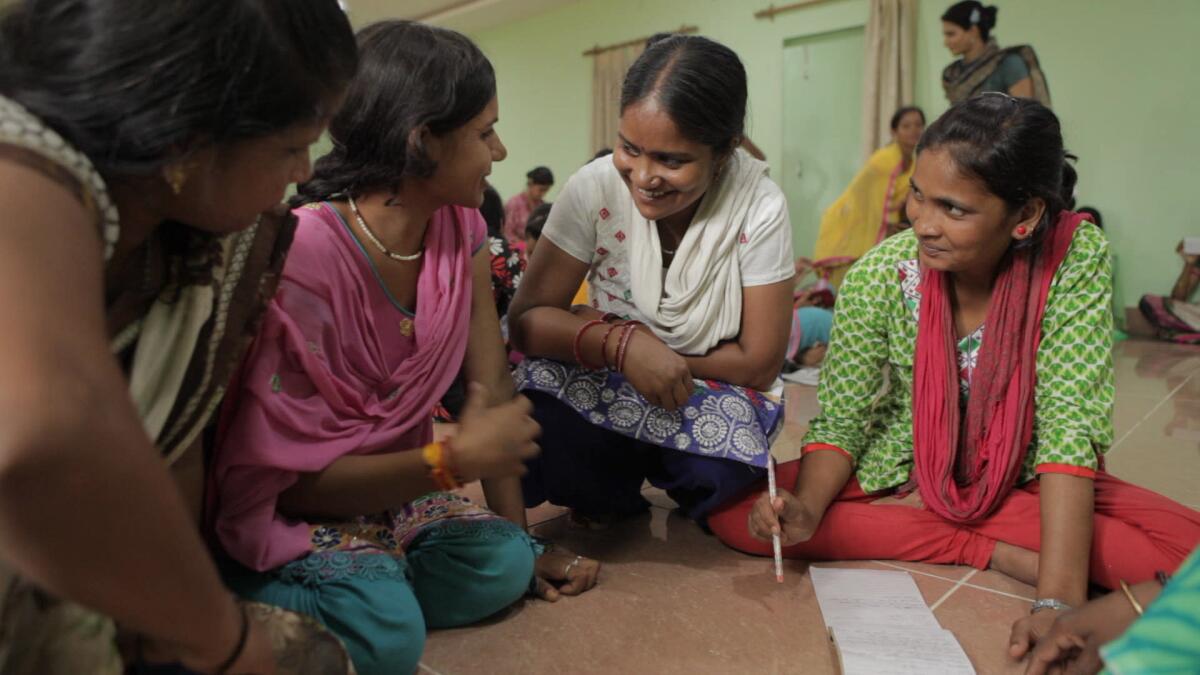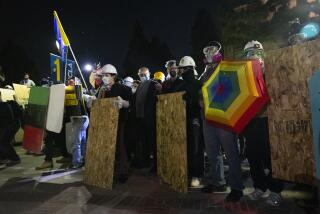Review: Resourceful and unafraid, these women journalists in India are ‘Writing With Fire’

The Times is committed to reviewing theatrical film releases during the COVID-19 pandemic. Because moviegoing carries risks during this time, we remind readers to follow health and safety guidelines as outlined by the Centers for Disease Control and Prevention and local health officials.
Lately, the news from India about news inside India has pointed to an increasingly worrying situation for journalists simply doing their job, particularly the profession’s women. What exacerbates the problem is the lack of understanding about what journalists do. People may grasp the fact-finding but miss the part about holding the powerful accountable and how it can protect democracy.
That’s why “Writing with Fire,” filmmakers Rintu Thomas and Sushmit Ghosh’s invigorating and inspiring new documentary about Khabar Lahariya (Waves of News), the only news organization in India run by women, feels so necessary right now. Working largely in the most media-starved rural regions of Uttar Pradesh, India’s most populous state, this grassroots outfit’s intrepid female reporters face daunting, dangerous obstacles trying to shed light on problems that range from public sanitation and broken roads to criminal corruption, with the plight of women in an often violently patriarchal society a dedicated focus.
Compounding the difficulties is that the KL’s reporters are primarily Dalit women, considered “untouchable” in India’s ancient, officially illegal yet socially ingrained caste system. But invisibility changes when stories get told and produce results. What seemed unthinkable when KL started in 2002 as a printed newspaper is now, in its online reach as a primarily digital operation, a vehicle of transformative empowerment for women trying to better the world, and by doing so, themselves.
The paper’s transition to internet journalism frames the movie, which is anchored by Meera, KL’s chief reporter and the one leading the charge to train her reporters — already learning the ropes of a tough job — in using smartphones. With a masters degree in political science and a full-plate domestic life (elderly father, skeptical husband, daughter mocked at school) in which pushback against being away from home is ongoing, Meera is an incredible figure of stamina, smarts and fearlessness. Those qualities benefit all journalists, of course, but they take on a greater importance for women in her position, where intimidation and threats are routine.
Meera sees the same qualities of sharpness and drive in Suneeta, a young woman drawn to reporting as a way to fight for justice, starting with the corruption entrenched in the mining operations where she once worked as a child. A stunning long shot shows Suneeta walking through a pall of mining dust, the only color in an oppressive landscape. Later, invoking miners’ families’ concerns to an obfuscating official, some of the male reporters from big outlets openly criticize her direct, unflinching questions. Outside afterward, one of them mansplains to her that she needs to praise officials like that to get answers. Her clap-worthy response: “There’s enough praise from you all.”
As the paper’s online presence grows, however — millions in pageviews, national and international recognition — the country’s tilt toward religious nationalism presents a more concentrated aura of fear. With election coverage upcoming, KL’s leadership is spurred to reformulate their approach to politically sensitive stories that could make them targets. That Thomas and Ghosh show these staff conversations lets us know that they’re attentive to the journalistic hazards in shaky democracies and also sensitive to the fact that these reporters aren’t just characters in an inspiring story, but people who must navigate spaces aligned against them as Dalit women as wellas chroniclers of injustice.
They keep at it, however, with uncommon enthusiasm. When Meera, the most incisive about these nuances, interviews a rising, potentially worrisome figure in the ruling party — a sword-carrying youth who symbolizes the new Hindu vigilantism — her careful questioning of him, including getting him to slowly unsheathe the sword for her camera phone, is a breathtaking hallmark of brave, savvy handling of a nervy, divisive subject. It’s also, to be honest, unbearably tense.
A vital, stimulating dispatch from the frontlines of consequential citizen journalism, “Writing with Fire” makes powerfully clear how underserved communities everywhere need reporters like the women of KL: resourceful and unafraid. Because for every noteworthy outcome of their coverage — a new road, overdue medical services, a revitalized investigation into a rape case, a woman energized to join their mission — there are forces against progress just as resourceful and unafraid.
'Writing with Fire'
In Hindi with English subtitles
Not rated
Running time: 1 hour, 38 minutes
Playing: Starts Nov. 26, Laemmle Royal, West L.A.
More to Read
Only good movies
Get the Indie Focus newsletter, Mark Olsen's weekly guide to the world of cinema.
You may occasionally receive promotional content from the Los Angeles Times.









